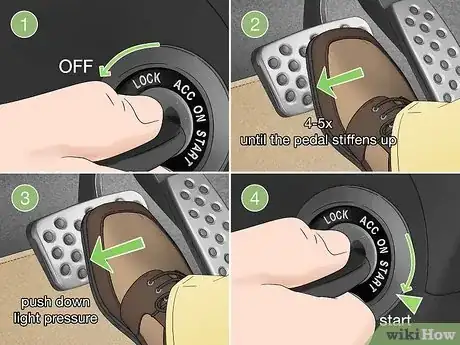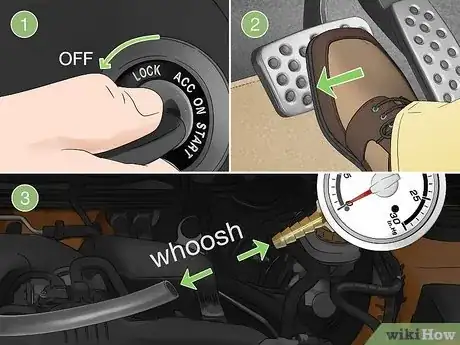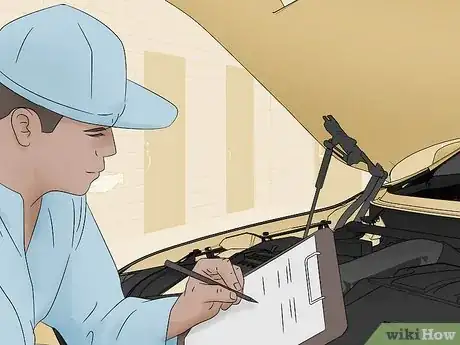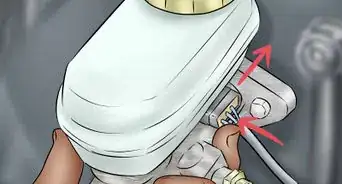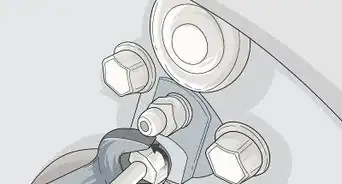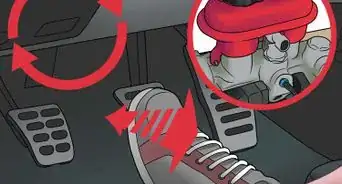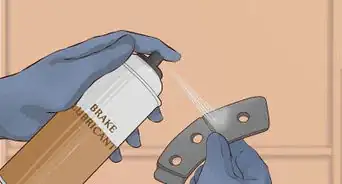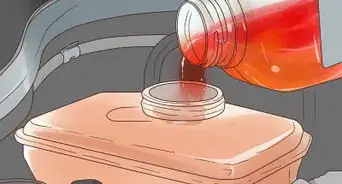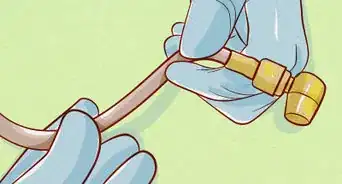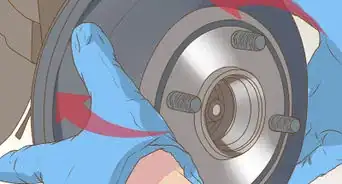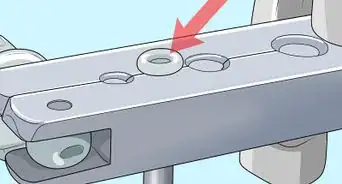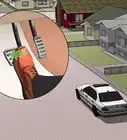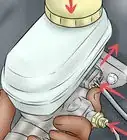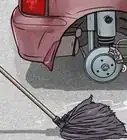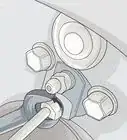This article was co-authored by Ed Beery and by wikiHow staff writer, Amber Crain. Ed Beery is an Automotive Specialist and the Owner of InTechgrity Automotive Excellence based in Denver, Colorado. With more than eight years of experience, he specializes in providing maintenance and repair services for both individuals and companies. Ed and the InTechgrity Automotive Excellence Team are approved by the American Automobile Association (AAA) for repairs and are Automotive Service Excellence (ASE) certified.
There are 7 references cited in this article, which can be found at the bottom of the page.
This article has been viewed 8,060 times.
The brake booster is a crucial component of your vehicle's braking system, so you want it to be fully functional at all times. In this article, we'll be explaining several simple diagnostic tests you can perform at home to make sure your booster is working properly and to help you pinpoint any potential issues. We'll also explain common symptoms of a faulty brake booster so you can recognize, confirm, and fix the issue as soon as it begins.
Things You Should Know
- To perform an easy test, turn off the car and pump the brakes 4-5 times until the brake pedal stiffens up. Then, push down the pedal and start the car.
- Check for a slight give underfoot. If the brake pedal stays stiff without giving slightly, the brake booster may be failing.
- Bring your car to a mechanic as soon as possible to get the booster fixed or replaced. Don't try to do it yourself unless you have experience.
Steps
Expert Q&A
-
QuestionWhy is my steering wheel pulsating when braking?
 Ed BeeryEd Beery is an Automotive Specialist and the Owner of InTechgrity Automotive Excellence based in Denver, Colorado. With more than eight years of experience, he specializes in providing maintenance and repair services for both individuals and companies. Ed and the InTechgrity Automotive Excellence Team are approved by the American Automobile Association (AAA) for repairs and are Automotive Service Excellence (ASE) certified.
Ed BeeryEd Beery is an Automotive Specialist and the Owner of InTechgrity Automotive Excellence based in Denver, Colorado. With more than eight years of experience, he specializes in providing maintenance and repair services for both individuals and companies. Ed and the InTechgrity Automotive Excellence Team are approved by the American Automobile Association (AAA) for repairs and are Automotive Service Excellence (ASE) certified.
Automotive Specialist This can indicate warped or worn rotors or unevenly worn brake pads. Rotors may get extremely hot which can cause warping. Inconsistent pad wear may be caused by poor installation, bad retention springs, or issues with the brake calipers.
This can indicate warped or worn rotors or unevenly worn brake pads. Rotors may get extremely hot which can cause warping. Inconsistent pad wear may be caused by poor installation, bad retention springs, or issues with the brake calipers.
References
- ↑ https://www.brakeandfrontend.com/ase-a5-how-to-test-vacuum-power-assist-and-hydroboost-braking-systems/
- ↑ https://www.repairsmith.com/blog/brake-booster-replacement/#can-I-test-the-brake-booster
- ↑ https://www.brakeandfrontend.com/ase-a5-how-to-test-vacuum-power-assist-and-hydroboost-braking-systems/
- ↑ https://www.brakeandfrontend.com/ase-a5-how-to-test-vacuum-power-assist-and-hydroboost-braking-systems/
- ↑ https://www.brakepartsinc.com/dam/jcr:32df1255-176c-49e4-9a71-068d9c729c7e/TB%2019-02.pdf
- ↑ https://powerbrakes.com/power-brake-troubleshooting-help/
- ↑ https://www.brakeandfrontend.com/ase-a5-how-to-test-vacuum-power-assist-and-hydroboost-braking-systems/
- ↑ https://greeninginc.com/blog/test-equipment/symptoms-of-a-bad-or-failing-vacuum-brake-booster/
- ↑ https://www.repairsmith.com/blog/brake-booster-replacement/#can-I-test-the-brake-booster

